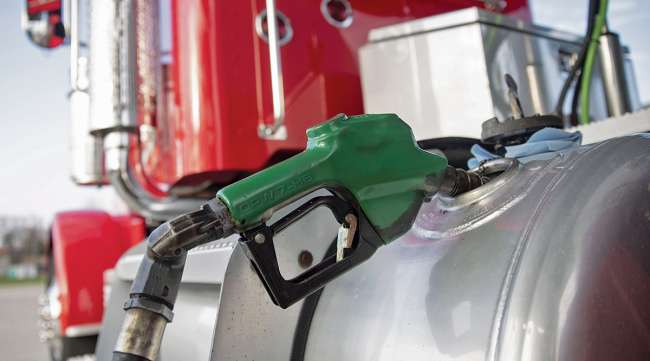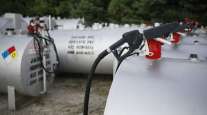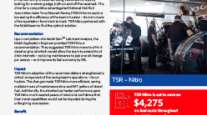Senior Reporter
Diesel Increases Nationwide as Refinery Closes, Vaccine Hopes Rise

[Ensure you have all the info you need in these unprecedented times. Subscribe now.]
For just the second time in as many months, the weekly national average price of diesel rose, according to Energy Information Administration data released Nov. 9.
Trucking’s main fuel increased 1.1 cents to $2.383. Still, diesel is 69 cents a gallon less expensive than it was this time a year ago.
Diesel’s price increased in eight of the 10 regions that EIA surveys on a weekly basis.
The biggest rise was in the Rocky Mountain region, where diesel increased 4.8 cents per gallon to $2.372. Diesel there still is 83.1 cents less per gallon than at this time in 2019.
Chicago-based oil industry analyst Phil Flynn told Transport Topics that one of the biggest factors in the price increase may have been the announcement by Royal Dutch Shell that it was closing its Convent Refinery in South Louisiana because of slumping oil demand as a result of the COVID-19 pandemic. It’s expected the refinery will begin to be mothballed in mid-November after Shell couldn’t find a buyer.

Flynn
“We had some good demand numbers the last week and the week before, with an increase in diesel because of more farmers pulling up their products because of the fall harvest,” Flynn said. “But we also had the announcement by Shell that it was shutting down this refinery.”
While diesel increased, EIA said the average price of a gallon of gasoline fell by 1.6 cents to $2.096. Nationally, gasoline is 51.9 cents a gallon less than it was a year ago.
Diesel last saw a price increase four weeks ago, when it climbed eight-tenths of a cent Oct. 12 to $2.395 a gallon.
The most expensive diesel remains in California, the only area in the survey where a gallon tops $3. Diesel there increased six-tenths of a cent to $3.237 and costs 77.7 cents a gallon less than it did a year ago.
The least expensive diesel is in the Gulf Coast region, which is home to much of the nation’s oil and gasoline production as well as its refining capacity.
Diesel there dropped by one-tenth of a cent to $2.132. Diesel along the Gulf Coast is 66.3 cents a gallon less compared with a year ago.
Meanwhile, the price of West Texas Intermediate crude, the industry’s benchmark, increased above $40 a barrel Nov. 9 on news that vaccine developers Pfizer and BioNTech announced a COVID-19 vaccine candidate has prevented more than 90% of infections. Flynn said that is causing some in the oil industry to hope that life could return to normal in 2021, once a vaccine is widely available.
“There’s finally some optimism in the market,” Flynn said. “The vaccine announcement probably pushes us back up in that higher trading range.”
Just last week, the price of WTI was at $36.98 a barrel, and on Oct. 29, it plunged to $35.11 — the lowest price since May — amid concerns the pandemic would reduce economic activity and stall oil demand.
The weekly Baker Hughes Rig Count of operating oil rigs shows that oil production continues to be far below pre-pandemic levels.
In the United States, the number of operating rigs increased by four to 300 during the week ending Nov. 6, a 62.2% decline from the year before when it was 817 rigs.
In Canada, the number of rigs remained even week-to-week at 86, compared with 140 a year ago, down 38.5%.
Flynn said while oil traders are cautiously optimistic demand for petroleum products may increase the rest of the year and into 2021, the rising number of COVID-19 cases worldwide could dampen those expectations.
In the United States and Europe infections are soaring and some big economies, including the United Kingdom, France and Germany, are reintroducing restrictions on travel and business to stop the spread of the virus.
“I think we are going to have some demand challenges here,” Flynn said.
Want more news? Listen to today's daily briefing:
Subscribe: Apple Podcasts | Spotify | Amazon Alexa | Google Assistant | More




